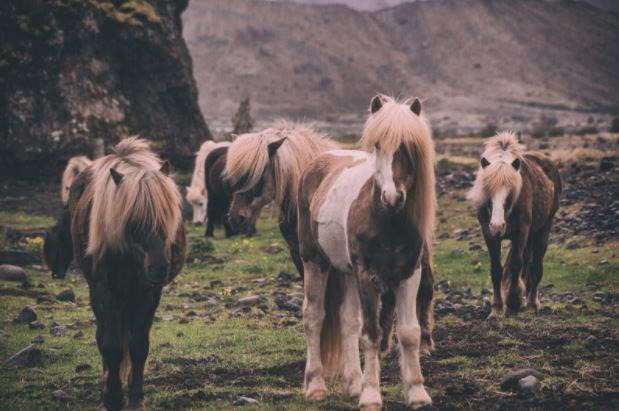Hold your horses - The Icelandic pure breed
In Iceland, visitors usually want to get acquainted with our mountains, glaciers, fjords, bizarre delicacies, hot dogs and even volcanoes.
But we have a firm reason to believe that you should add the Icelandic horse to that list.
Here’s Why.
Originally taken to Iceland by Norse settlers in the 9th and 10th centuries, this particular breed of horse has been mentioned in historical records and literature throughout history. Over the ages, selective breeding has developed the Icelandic horse into its current form.
Natural selection played a huge role as well. The harsh weather conditions eliminated many breeds through cold and starvation, and in the 1780s, a large number was wiped out in the aftermath of a volcanic eruption.
Our little “pony”
In 1904, the first breed society for the Icelandic horse was founded, and today that breed is represented by organizations in 19 different nations, organized under a parent association, the International Federation of Icelandic Horse Associations.
Some horses are known to be almost pony-sized, and most registries for the Icelandic one simply refer to it as (you guessed it!...) a horse. But this one, traditionally used for sheepherding work locally, demonstrates two gaits in addition to the standard walk, trot and gallop, most commonly displayed by other breeds. The other two are known as “tölt” (tolt) and “skeið” (flying pace). Comparable gaits are linked to the Pasofino horses in South America.
Some Icelandic horses actually change color. They can be chestnut in winter and white during spring, but anything goes, really, and sometimes the color of their “coats” mixes up.
Delicacy and admiration
During the viking ages, horses were essential for warfare, and the life of a warrior depended on the capability and loyalty of his horse. They were seen as a symbol of power for vikings, so they showed great respect for them.
It used to be forbidden in Iceland to feast on horse meat, and it wasn’t until the 1800s when the laws changed and it was less frowned upon by the local population.
Since there has been no cross breeding for more than a thousand years, the Icelandic horse is as pure a breed as you can find. And the horses are long-lived and hardy as well, since they have few diseases and the reason is because Icelandic law prevents horses from being imported into the country and exported animals are not allowed to return. The ban still stands today, and has since 982 AD.
Essentials for communication
A common question is whether horses see in black and white. In truth, they are orange-blue “color-blind” in that although they can see objects with these colors, they cannot differentiate between orange and blue solely on the basis of color since they both appear to be gray-white to the horse.
Horses are known to have terrific memory, and that’s why they are great with bonding with people whom they trust and remember, and in communication, tone is more important than words as the horses have a keen sense in that regard.
For horse rental services and riding activities in South Iceland, click here.

